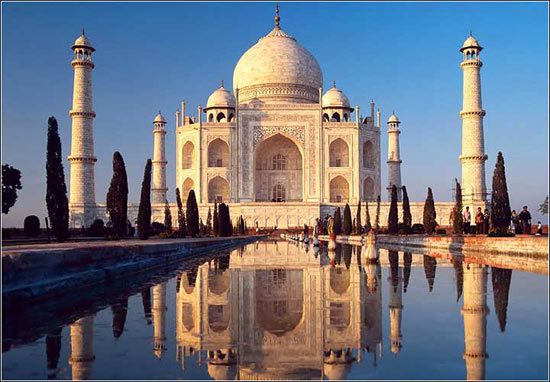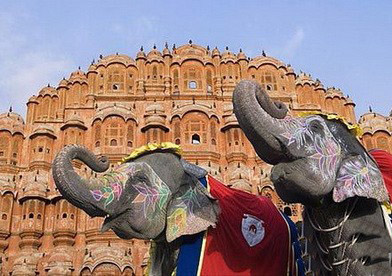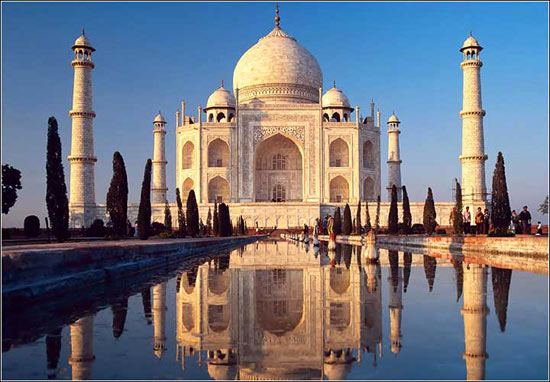 印度是一个拥有很多庞大数目的国度:它拥有超过10亿人口,100万次暴乱以及1000种不同语言。然而,如果说印度自1947年独立以来只经历过两种经济体制就是保守了。
印度是一个拥有很多庞大数目的国度:它拥有超过10亿人口,100万次暴乱以及1000种不同语言。然而,如果说印度自1947年独立以来只经历过两种经济体制就是保守了。
第一次缓慢发展发生在在令人费解的繁文缛节和难以忍受的官僚主义盛行时期;第二次快速增长在20世纪90年代自由开放以后逐渐形成。这个国家似乎注定要经历一场长期喷发式的增长时期,这要归功于它庞大的人口,充满激情的公司,逐渐开展的改革以及从事拯救和投资的意愿。
但是最近,正如宝莱坞的某个混蛋拒绝走向灭亡一样,古老的印度又酝酿了一场恐怖的昨日重现。主要原因存在于这个国家令人绝望的政治状况上。
重新进入经济吃力前行的阶段
印度的增长趋势从20世纪80年代后期的平均大概6%,增长到多达10%(有些人认为可能会更高),听起来似乎并不高。但是经过几十年的预测,它承诺会改变这个国家和整个亚洲——上亿的印度人口本该更快脱离贫困,五角大楼的战略家们也已经开始把印度当作下一个超级大国以及与中国势均力敌的国家。
没有人怀疑印度经济会保持越来越好的增长势头的实力,但引领它在经济轨道中飞行的天使已经坠地了。经济增长速度在上个季度已经降到了6.1%。即便如此,正如政府所希望的,经济还会恢复,许多人担心接下来的增长趋势不会超过7%。
最近的3个小插曲证实了最大的困惑所在。首先,印度政府宣布它最后会向外国公司开放零售行业——只需要在几天内转变一下想法。这个月,为了保护国内产业,它禁止棉花的出口,激怒了印度农民和贸易伙伴。上周,印度政府开始统治最高法院,改变税收条码以达到对外国收购者追加税收的目的,尤其是对沃达丰公司(Vodafone)收购的印度武器。有人担心这条印度最强硬的法律将要被废除。
难怪企业有怨言、投资在下滑。从未消失过的繁文缛节和腐败问题似乎更加严重了——最近的政府选举期间突然多出了很多纸币,这也顺便帮银行系统解释了流动性问题。长期的瓶颈尚未解决,这成为造成印度持续高通胀的一部分原因。
经过这么多年,与政府有关的每一个问题仍然很巨大、很疯狂。很少有人认为这些问题会轻易被解决。一个足智多谋的私人部门可能会让印度步入繁荣,只不过这种观点现在看起来有些不切实际。这不仅仅是缺少每个经济体都需要的公共服务的问题,尤其是当制造业开始兴盛的时候——当数百万劳动力每年涌入市场寻找工作时。最近,政府又找到了处理这些问题的其他方法。
过去几年疯狂的借债(印度的赤字总额将达到GDP的10%)已经涌入了私人领域,让中央银行降低利率变得很难。大批逃离官僚体制的新产业,例如移动电信,现在感到了它粘人的控制力。
这种萧条的景象主要由两种政治问题引起。选民忠诚度的逐渐丢失让印度议会的算法变得异常紧张。自2004年就开始统治印度的国会党现在要依靠变化莫测的平民联合伙伴。国会本身则乱成一团糟。上了年纪的开国大臣们在索尼亚•甘地(Sonia Gandhi)的邀请下为国效力,他们是世袭的大官;让她的儿子Rahul当下一个君主的想法已经泡汤了。印度政府已经多年没有施行过大的改革了,它似乎因为要将一个个参差不齐的个体联合起来而心事重重,直到2014年的国家大选结束。
第二种政治问题与有限的抱负有关。最近的预算见证了税率、债务限额和关税的拧巴,所有这些都难以置信地预示着更大一步行动的来临。挣扎地通过新的国家商品和服务税等改革措施,不愿处理能源等国家垄断和享有特权的行业中存在的问题,甚至改革现有的政治人员都是为了牵动这个腐败机器中已经腐烂的杠杆。行政的即兴演奏取代了真正能够开启这个国家经济的改革。
 印度的政治家指出,印度6%-7%的增长率比其他大部分国家都要快得多,可惜那只是自我感觉良好罢了。就像中国说需要8%的增长率来保持社会稳定,印度可能只需要6%或更多就可以保持财政稳定。这个增长率其实比难以偿还国债、足以吓跑国外资本的水平还要低,而印度正需要这些国外资本来弥补目前帐户的亏空以及用于支付进口的能源资源。如果说一个富裕的国家没能发挥出自己的潜力是种遗憾的话,那么对印度来说,这么多穷人和失业者的存在就是一个国家的悲剧。
印度的政治家指出,印度6%-7%的增长率比其他大部分国家都要快得多,可惜那只是自我感觉良好罢了。就像中国说需要8%的增长率来保持社会稳定,印度可能只需要6%或更多就可以保持财政稳定。这个增长率其实比难以偿还国债、足以吓跑国外资本的水平还要低,而印度正需要这些国外资本来弥补目前帐户的亏空以及用于支付进口的能源资源。如果说一个富裕的国家没能发挥出自己的潜力是种遗憾的话,那么对印度来说,这么多穷人和失业者的存在就是一个国家的悲剧。
背弃宗祖
最终,破碎的政治可能会变成希望的源泉,一些国家还在继续向前走。尽管今年的地方选举仍以一贯渎职和世袭的候选人为主,一些投票者放弃了含冤的古老政治、社会地位和宗教,淘汰掉无用的政治家,给更有希望当选的人投票。然而,从国家的层面来说,对新一代的政客来说,可能需要数年的时间来突破今天拥挤的老人政治。主要的反对党,印度人民党(the BJP)看起来并不比国会好多少。
如今,印度需要靠运气让这个国家重新走向正轨。恐惧应该是一个动力,经济放缓之后的印度财政会更加虚弱,国家会更贫穷,问题青年会越来越多,逐渐被世界上的其他国家所遗弃。印度的政治等级不会承受这种后果。印度是一个失去改革激情的国家,它需要重新获得这种神奇的魔力。
 INDIA is a land of large numbers: a place of over a billion people, a million mutinies and a thousand different tongues. But it is not too much of a stretch to say that since independence in 1947 there have only been two kinds of Indian economy.
INDIA is a land of large numbers: a place of over a billion people, a million mutinies and a thousand different tongues. But it is not too much of a stretch to say that since independence in 1947 there have only been two kinds of Indian economy.
The first produced slothful growth, mind-bending red tape and suffocating bureaucracy. The second revved up gradually after liberalisation in the 1990s, so that by the mid-2000s India was a land of surging optimism—open and full of entrepreneurs who overcame a retreating but still cranky public sector. The country seemed destined to enjoy a long spurt of turbocharged growth, thanks to its favourable demography, fired-up firms, gradual reforms and willingness to save and invest.
But lately, like a Bollywood villain who just refuses to die, the old India has made a terrifying reappearance (see article). The main reason is the country’s desperate politics.
Back to the rickshaw rate of growth
India’s acceleration in trend growth, from an average of about 6% in the late 1980s to as much as 10% (and, some hoped, beyond), may sound modest. But extrapolated over several decades it promised to transform the country and Asia. Hundreds of millions of Indians would escape poverty faster. Firms the world over licked their chops at the prospect of a vast new middle class. Strategists in the Pentagon began to see India as a superpower-in-waiting and a democratic counterweight to China.
No one doubts that India’s economy will keep getting bigger. But the angle of its economic trajectory has dropped. Growth slowed to 6.1% in the past quarter. Even if, as the government hopes, it bounces back, plenty of people worry that trend growth is now unlikely to be much above 7%.
Three recent episodes illustrate the muddle at the top. First, the government announced that it was at last opening its inefficient retail industry to foreign firms—only to change its mind within days. This month, to protect industry at home, it banned the export of cotton, upsetting India’s farmers and trading partners; within days, it backtracked. And last week the government moved to overrule the Supreme Court and change the tax code to tax foreign takeovers retroactively, not least Vodafone’s purchase of its Indian arm. Some worry that the rule of law, one of India’s great strengths, is being eroded.
No wonder business is in a sulk and investment is falling. Red tape and corruption, always present, seem to have got worse—in recent state elections so many banknotes were doled out that they help explain a liquidity problem in the banking system. Longstanding bottlenecks have not been tackled. Partly as a result, inflation is high and stubborn.
Every one of these problems involves the state, still huge and crazy after all these years. Few ever thought it could be reformed easily. But the hope was that a wily private sector would allow India to sprint to prosperity regardless. That view now looks romantic. It is not just a matter of a lack of the public services, from roads to power, that any economy needs, particularly if manufacturing is to thrive—as it must in India if the millions entering the workforce every year are to find jobs. Lately the state has found other ways to muck things up.
Its borrowing binge in the past few years (India’s overall fiscal deficit is approaching a tenth of GDP) has crowded out the private sector and made it hard for the central bank to cut interest rates. New industries that had largely escaped the bureaucracy, such as mobile telecoms, now feel its clammy grip.
This dispiriting scene is in turn mainly caused by two political problems. The gradual fragmenting of voters’ allegiances has made India’s parliamentary arithmetic excruciatingly tight. The Congress party, which has ruled the country since 2004, depends on fickle and populist coalition partners. Congress itself is in a mess. The elderly ministers who run the country serve at the behest of Sonia Gandhi, the hereditary chief; an attempt to promote her son Rahul as the next dynast has gone badly. The government has not passed a big reform for years and seems preoccupied by holding a ragged coalition together until national elections in 2014.
The second kind of political problem has to do with limited ambition. The recent budget saw tweaks to tax rates, debt quotas and duties, all implausibly heralded as big steps. Struggling to pass reforms such as a new nationwide goods and services tax, and unwilling to tackle state monopolies and vested interests in industries like energy, even reforming politicians now settle for yanking a few rusty levers of the bureaucratic machine. Administrative improvisation is being taken as a substitute for genuine reforms that open up the economy.
 India’s politicians point out that growth of 6% or 7% is far faster than most other countries. But that is complacent. Just as China is said to need 8% growth in order to maintain social stability, India probably needs to grow at 6% or more to maintain financial stability. Lower growth than that would make the public debt harder to bear and scare off the foreign capital that India needs to fund its current-account deficit and pay for its imported energy. And whereas for a rich country, failing to fulfil its potential is a disappointment, for India, so full of poor people and so badly in need of jobs, it is a tragedy.
India’s politicians point out that growth of 6% or 7% is far faster than most other countries. But that is complacent. Just as China is said to need 8% growth in order to maintain social stability, India probably needs to grow at 6% or more to maintain financial stability. Lower growth than that would make the public debt harder to bear and scare off the foreign capital that India needs to fund its current-account deficit and pay for its imported energy. And whereas for a rich country, failing to fulfil its potential is a disappointment, for India, so full of poor people and so badly in need of jobs, it is a tragedy.
Out with the old
Eventually, fragmenting politics may become a source of hope. Some states are still forging ahead. And although local elections this year featured the usual graft and hereditary candidates, some voters discarded the old politics of grievance, caste and religion, chucked out useless politicians and voted in more promising ones. Yet at the national level it may take years for a new generation of politicians to break through today’s crowd of gerontocrats. The main opposition party, the BJP, is scarcely in better shape than Congress.
For now, then, it is up to the existing lot to get India back on track. One motivation should be fear. A slower-growing India will be more financially vulnerable, poorer, full of frustrated young people and taken less seriously by the rest of the world. India’s political class will not enjoy the consequences. India is a place that has fallen out of love with reform. It needs to get the magic back.
 印度是一个拥有很多庞大数目的国度:它拥有超过10亿人口,100万次暴乱以及1000种不同语言。然而,如果说印度自1947年独立以来只经历过两种经济体制就是保守了。
印度是一个拥有很多庞大数目的国度:它拥有超过10亿人口,100万次暴乱以及1000种不同语言。然而,如果说印度自1947年独立以来只经历过两种经济体制就是保守了。
 印度的政治家指出,印度6%-7%的增长率比其他大部分国家都要快得多,可惜那只是自我感觉良好罢了。就像中国说需要8%的增长率来保持社会稳定,印度可能只需要6%或更多就可以保持财政稳定。这个增长率其实比难以偿还国债、足以吓跑国外资本的水平还要低,而印度正需要这些国外资本来弥补目前帐户的亏空以及用于支付进口的能源资源。如果说一个富裕的国家没能发挥出自己的潜力是种遗憾的话,那么对印度来说,这么多穷人和失业者的存在就是一个国家的悲剧。
印度的政治家指出,印度6%-7%的增长率比其他大部分国家都要快得多,可惜那只是自我感觉良好罢了。就像中国说需要8%的增长率来保持社会稳定,印度可能只需要6%或更多就可以保持财政稳定。这个增长率其实比难以偿还国债、足以吓跑国外资本的水平还要低,而印度正需要这些国外资本来弥补目前帐户的亏空以及用于支付进口的能源资源。如果说一个富裕的国家没能发挥出自己的潜力是种遗憾的话,那么对印度来说,这么多穷人和失业者的存在就是一个国家的悲剧。

 INDIA is a land of large numbers: a place of over a billion people, a million mutinies and a thousand different tongues. But it is not too much of a stretch to say that since independence in 1947 there have only been two kinds of Indian economy.
INDIA is a land of large numbers: a place of over a billion people, a million mutinies and a thousand different tongues. But it is not too much of a stretch to say that since independence in 1947 there have only been two kinds of Indian economy.
 India’s politicians point out that growth of 6% or 7% is far faster than most other countries. But that is complacent. Just as China is said to need 8% growth in order to maintain social stability, India probably needs to grow at 6% or more to maintain financial stability. Lower growth than that would make the public debt harder to bear and scare off the foreign capital that India needs to fund its current-account deficit and pay for its imported energy. And whereas for a rich country, failing to fulfil its potential is a disappointment, for India, so full of poor people and so badly in need of jobs, it is a tragedy.
India’s politicians point out that growth of 6% or 7% is far faster than most other countries. But that is complacent. Just as China is said to need 8% growth in order to maintain social stability, India probably needs to grow at 6% or more to maintain financial stability. Lower growth than that would make the public debt harder to bear and scare off the foreign capital that India needs to fund its current-account deficit and pay for its imported energy. And whereas for a rich country, failing to fulfil its potential is a disappointment, for India, so full of poor people and so badly in need of jobs, it is a tragedy.